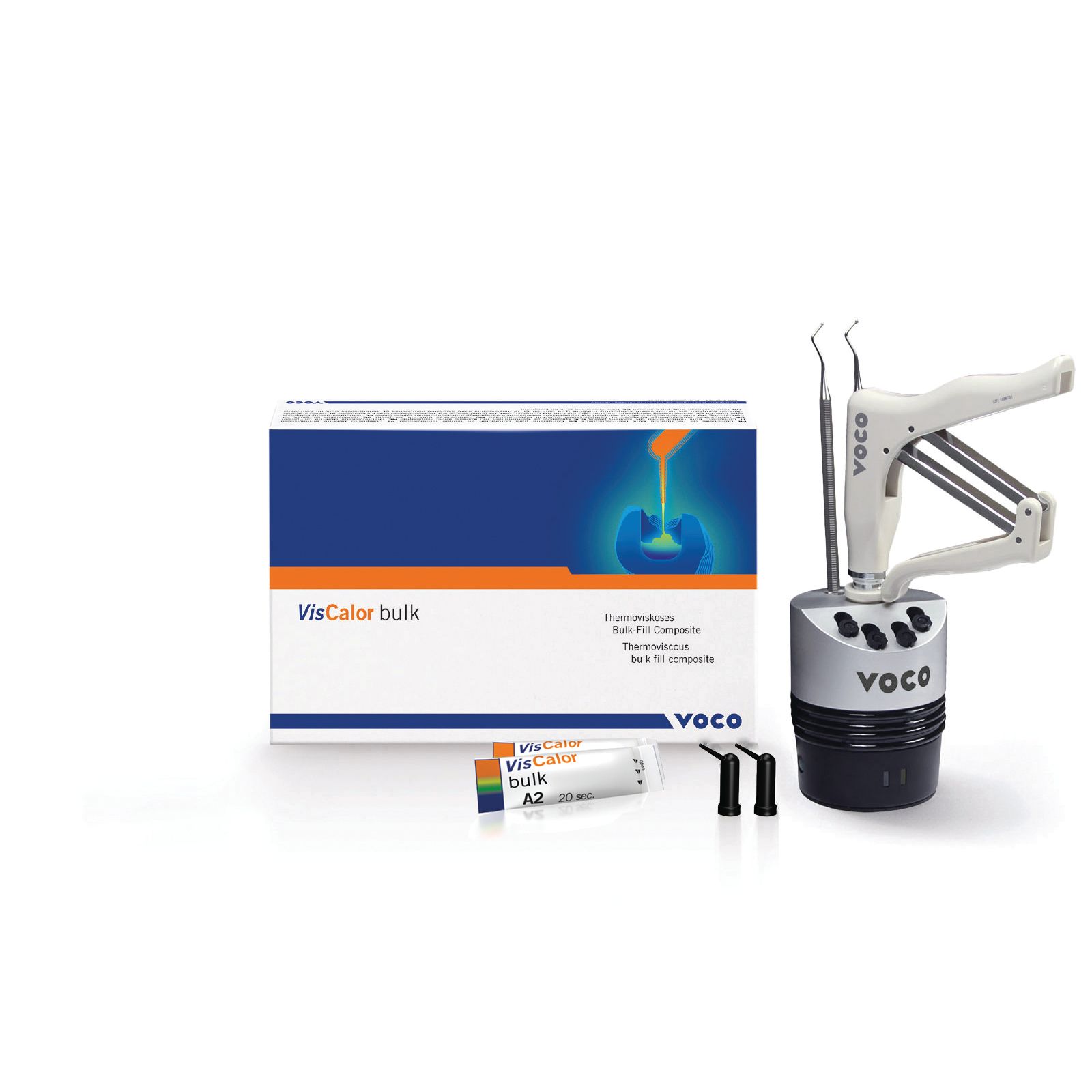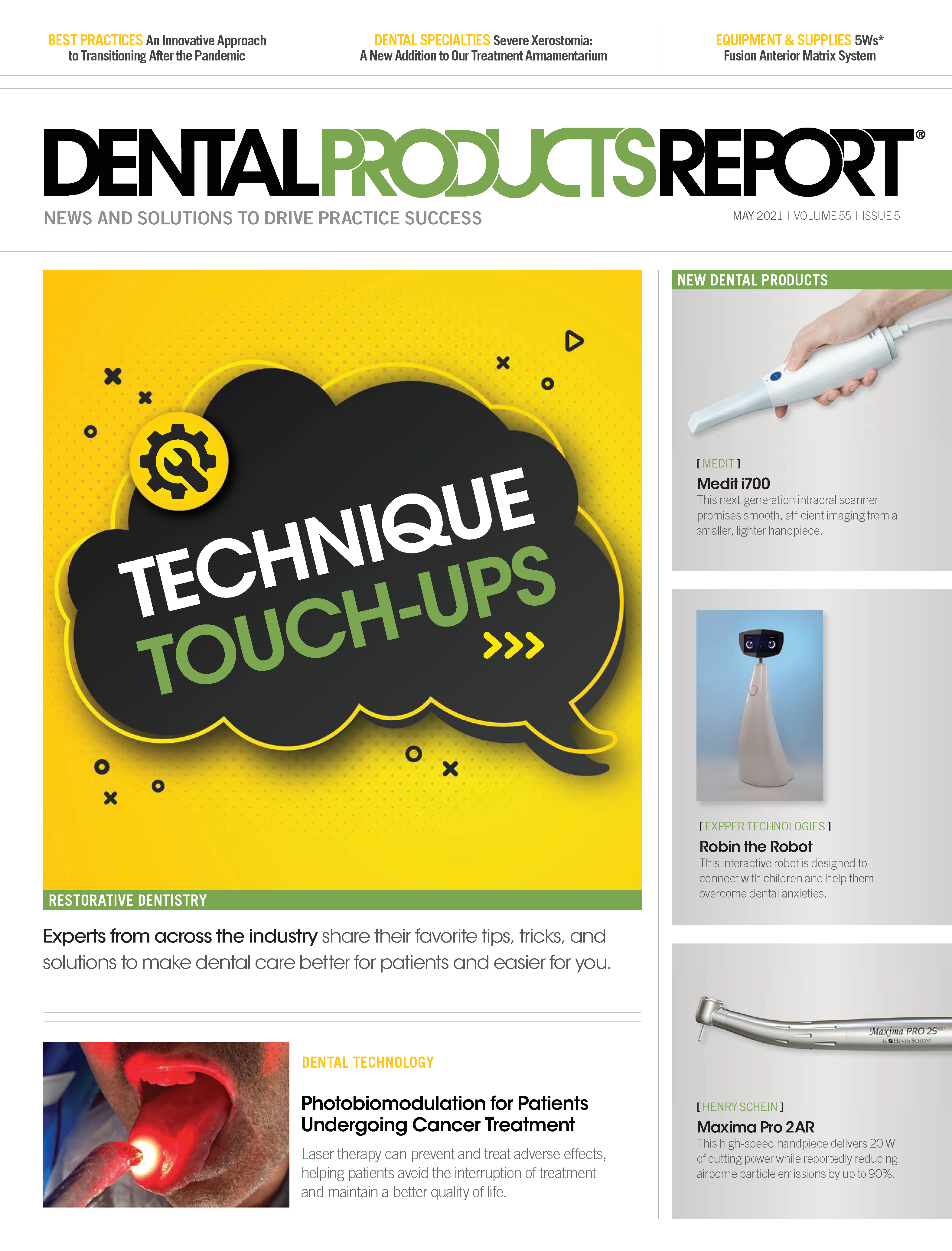Expect the Unexpected With VisCalor bulk
Just when I thought we couldn’t advance any further with composites, along came VisCalor bulk.

I find it amazing to see and experience the continual expansion of our knowledge of the science behind our incredible profession. For those of you who don’t know, I am a huge fan of baseball, and one of my all-time favorite personalities of the game was a player for the Negro League’s Kansas City Monarchs named Buck O’Neil. He passed away in 2006 at age 94, and his positive attitude and indomitable spirit are still something of a legend in my hometown of Kansas City.
He had lived through segregation, racism, and other horrible parts of our history. However, he also met and played with some of the greatest players in the history of the game. He was once asked if he wished he would have been born during the current time when there is so much more focus on equality. Because of that focus, he would have played in the Major Leagues. His response was, “Waste no tears for me. I didn’t come along too early—I was right on time.”
That’s exactly how I feel in our current dental environment. The changes that we see today are incredible and are only getting better. There are extraordinary advancements made every day, no matter what aspect of our profession you mention. It is an amazing time to be in the health care profession. Another thing to consider is that just when you feel like things in a particular category cannot be advanced any further, along comes a product that completely knocks your socks off and changes things up once again.
That’s exactly what has happened in the realm of composites with a new product called VisCalor bulk from VOCO.
Warming It Up
The name gives you an indication of one of the ways this composite changes things up. For years now, some of us have been warming our composite resins. Warming any composite resin creates inherent benefits, but VisCalor, as the name implies, is a material that is designed to be warmed. The smart minds at VOCO have come up with the term TVT (thermo-viscous technology) to describe the advantages of the product.
When warm, the material has incredibly low viscosity. In fact, when warm, it is practically a flowable. This means that it is incredibly easy to place and that it adapts amazingly well to the preparation. Many doctors choose to place a flowable composite on the floor of the preparation to ensure the dentin is properly covered. Total dentin coverage helps to decrease sensitivity.
Occasionally when placing a normal composite, as the placement instrument is taken off the material, a small amount of composite will stick to the instrument and pull up off the dentin. This creates a void on the pulpal floor. When the material is then loaded occlusally, it flexes and the void creates a pressure differential across the pulpal floor, leading to sensitivity.
Because VisCalor has such low viscosity when it is placed, it flows easily into all of the “nooks and crannies” of the preparation, meaning that a base layer of flowable is not needed. This saves steps, which is much more efficient, and makes the procedure go smoother.
Gearing Up
So how does one go about warming this material? You have 2 choices.
The first is a compule warmer, a device that is AC powered, heats up, and holds the compules until you need them. It can also hold 2 hand instruments as well as a composite dispensing gun, which allows all of these items to be kept at the proper temperature for the material. The device takes approximately 20 minutes to heat up to the proper temperature, so it needs to be turned on before the first patient of the day and given adequate time to reach the optimum temperature.
The second choice is my personal preference—a gun-type dispenser that actually heats the compules as they sit in the barrel. The gun is powered by a rechargeable battery, and it heats the material using an array of near-infrared LEDs. The compule snaps into the barrel, and once it is in place, the LEDs (which are located directly over the compule) warm the material in 30 seconds.
Before I start to chemically treat the preparation, I place the compule in the gun and hit the “on” button. By the time we have gone through our bonding process and are ready to place the VisCalor bulk, the gun is done heating the material and is ready to go. After placement, the gun shuts off automatically 3 minutes after being turned on.
Redesigned Compule
Sometimes a new idea comes along that is so simple that you think, “Why didn’t I think of that?” The compule for VisCalor bulk is one of those ideas. VOCO has redesigned the compule to allow for easier and better placement of the material. Because VisCalor bulk is so flowable when warmed, the compule has been created with a long, narrow diameter tip. The diameter allows the operator to place the tip all the way to the floor of the box in interproximal restorations and fill from the bottom up.
A standard composite compule has a rather large diameter lumen on the tip—simply because the material is so viscous that it could not be dispensed out of anything smaller, even when warmed. The problem with that design is that it is difficult to place those large tips into small interproximal boxes. Often, composite ends up being extruded over the matrix band, resulting in time-consuming cleanup. This rarely happens with VisCalor bulk.
Thermo-Viscous Technology
The concept of TVT is pretty amazing. When properly warmed, VisCalor bulk is almost a flowable. But when it cools, it becomes very malleable. That means that initial placement is incredibly easy, and then the material can be shaped and sculpted.
The combination of low viscosity and the narrow tip of the compule mean that it is amazingly easy to place, adapts well, and can be placed without voids and bubbles.
Bulk Fill and Esthetics
One of the other terrific features of this material is, once again, in the name. It is VisCalor bulk, and that word bulk is a tremendous advantage. The depth of cure is up to 4 mm. Once again, that means that in a 4-mm preparation, you do not need to do a series of two 2-mm incremental placements. And that means patients spend less time in the dental chair.
This can greatly increase efficiency, especially if you are doing quadrant dentistry. As I’ve said many times in the past, no patient wants an appointment to take longer. Plus, the less time you and your assistant spend in the clinical posture, the better it is for long-term health and mobility. Dentistry is notoriously physically strenuous on practitioners, so the less time you spend in that clinical posture, the better it is for you.
Typically, bulk fill brings some disadvantages. The most common problem is esthetics. To get a bulk fill, the energy from the curing light must reach the bottom, or close to the bottom, of the material. Usually companies accomplish this by making the material more translucent. Although this helps with depth of cure, it sacrifices esthetics, often making the finished restorations look gray.
That was what I expected when I began working with VisCalor bulk. However, I could not have been more wrong. Simply stated, VisCalor bulk may well be the most esthetic material I have used in my career, and I have used quite a few. I am routinely amazed by the way this material blends in with the surrounding tooth structure. At times, it is practically invisible, and that is when I’m viewing it with my Orascoptic ×5 magnification.
Wrapping Up
The one thing I’ve learned over my years of practice is to expect the unexpected—whether with a treatment plan that suddenly goes sideways, which happens to all of us, or when I start to think there isn’t much further we can go with composites.
I have been using VisCalor bulk for about 6 months now because I was beta testing it in the fall, and I can tell you that it is an impressive restorative material that has taken composites to a new level.
VisCalor bulk was released in February, so you can order it now. I highly recommend you check it out. I think you’ll feel the same way about it that I do.

ACTIVA BioACTIVE Bulk Flow Marks Pulpdent’s First Major Product Release in 4 Years
December 12th 2024Next-generation bulk-fill dental restorative raises the standard of care for bulk-fill procedures by providing natural remineralization support, while also overcoming current bulk-fill limitations.